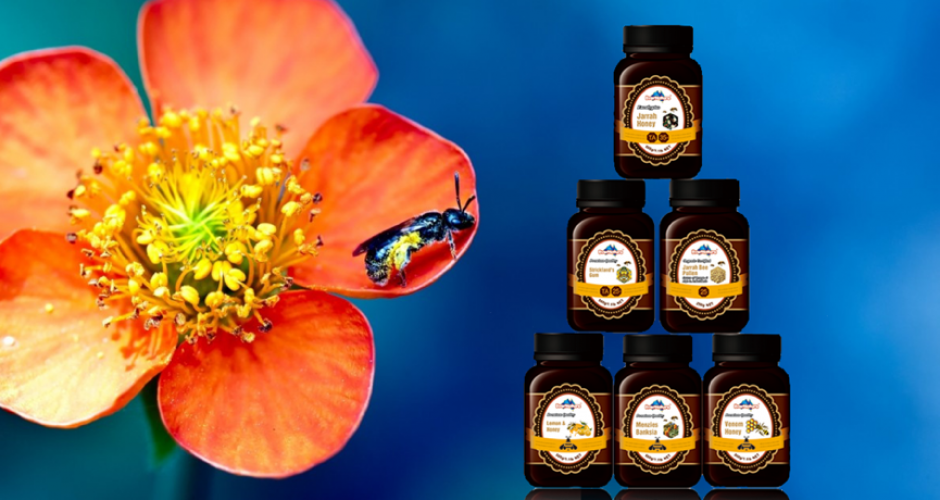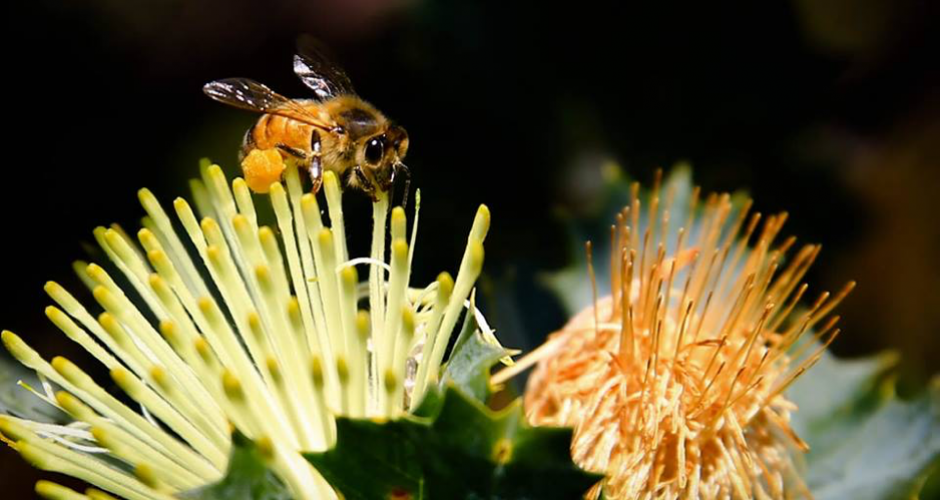Honey Product
HONEY PRODUCTION IN THE WEST AUSTRALIAN JARRAH FOREST
The Jarrah Forest is unique to the Darling Range in the South West corner of Western Australia. It is a mixed forest with Jarrah (Eucalyptus marginata) trees as the dominant species, with Redgum or Marri (Corymbia callophylla) trees on the lower slopes and in low-lying areas. Forest Blackbutt (Eucalyptus patens) trees grow along the watercourses on the higher rainfall western side of the range but are replaced by Whitegum (Eucalyptus wandoo) trees on the lower rainfall eastern side of the range. All of these species only grow in this ecosystem which does not occur anywhere else.
In the past 200 years the trees from this forest have been extensively logged for their valuable timber resources. Today much of this forest is reserved in conservation reserves such as National Parks and Nature Reserves, and also in State Forests managed for multiple values including recreation and beekeeping. We are indeed fortunate that all of these trees produce good quantities of nectar and pollen and that there is an extensive understory which sustains a wide variety of wildlife, especially birds.
The Government agency which manages these reserves and forests, the West Australian Department of Parks and Wildlife, maintains a system of Apiary sites allocation which is utilised extensively by WA’s commercial apiarists.
Because these tree species have unique flowering cycles, which are usually separated in time, the commercial beekeepers of Western Australia are able to harvest honey crops from each of the species as separate varietals, often from beehives located on the same apiary site.
Fortunately though, attention is now focussing on the medicinal values of the other varietal honeys from the Jarrah forest. It appears that WA BLACKBUTT HONEY produced from some sites has even higher activity levels than Jarrah honey from those same sites. WA blackbutt has the common name ‘Yarri’, and is usually a tall tree up to 45 m in height, with a relatively large straight trunk. On less favourable, particularly swampy sites, it is a smaller tree of poor form. It has a natural distribution that coincides closely with that of jarrah (E. marginata), from near Perth in the north to Albany on the south coast. WA Blackbutt trees normally flower in early summer after the forest Jarrah trees have finished flowering, enabling the beekeepers to extract this honey separately from the Jarrah honey crop, although generally speaking the crops are relatively small.
Redgum, or ‘Marri’, is also usually a large tree to 40 m in height but it can also take mallee form on poor sites. It occurs in a range of habitats and is an important component of both the Jarrah and Karri forests of Western Australia as well as occurring on the coastal plain on a range of soils.
Its fruits are large nuts and the large seeds provide an important food source for many species of parrots including cockatoos. Its prominent cream flowers, held outside the canopy, are spectacular in mid-summer, despite this being in the middle of a rainless period in the mediterranean climate of its native habitat. The flowering cycle is shorter than Jarrah, some flowering ocurring annually, with a heavier flowering event usually occurring every second year. Because it normally flowers in mid to late summer, again the beekeepers are afforded the opportunity to extract this varietal honey separately from both the preceding Jarrah and Blackbutt honey crops. Since the beekeepers are now engaging in much more extensive testing of their honeys, it has been found that FOREST REDGUM HONEY is also yielding high activity levels, although like WA Blackbutt honey this property also appears to be site-specific. Where appropriate, the marketplace is now rewarding the beekeepers with higher prices for these honeys with elevated activity levels.
Long considered a premium honey variety in the West Australian domestic market because of its light colour and excellent flavour, demand for WANDOO HONEY is growing rapidly in export markets because of its natural cleanliness and lack of chemical contamination due to the conservation environment where much of it is produced. It also has the characteristic of forming very fine crystals when it candies naturally, so is a prime choice for the production of creamed honey, especially popular in some markets, particularly in Europe. Wandoo trees flower over a longer time span, from early winter to late summer depending on latitude, although their flowering cycles are more spaced in time, sometimes being as much as 4 years apart. Again as ‘hunter-gatherers’ the beekeepers have no control over this aspect of production.


